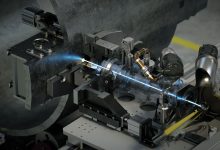Daniel Barciuc, Head of Digital Industries, Siemens Romania: The Future of Automation in Industry
Daniel Barciuc, Head of Digital Industries at Siemens Romania, talks about the current challenges for manufacturers and the solutions that can support them to remain competitive in the future.
Siemens is an innovative leader in the fields of industrial automation and digitalization. The company’s mission is to support its customers in the discrete and process industries along their digital transformation journey. The company is continuously expanding its Digital Enterprise portfolio to include state-of-the-art technologies and to offer industry-specific end-to-end solutions for industry and companies of all sizes.
Dear Mr. Daniel Barciuc, after more than 20 years of experience in the field of industrial automation, how do you see the future in this area of activity? What news will the next decade bring?
Daniel Barciuc: The business environment is undergoing an unprecedented transformation, influenced by advanced technological discoveries in digitization and data analytics. Technology for platform-based businesses, innovations and the rapid evolution of technology will generate increased competitiveness in business. The biggest impact, for the economy and society, in general, will be generated by robotics, ‘big data analysis’ and artificial intelligence.
The industrial revolution is defined by the speed of the innovation cycle of each stage, from the emergence of a technology to the next industrial revolution. The cycles of innovation have become shorter and shorter, as a result of digitalization – and we are witnessing, in fact, a rapid succession of digital revolutions under the umbrella of the term Industry 4.0.
The future of automation is represented by the next stage of evolution in the journey towards Industry 4.0, namely the visibility of automation processes in discrete or process industries. An agile company needs information from various areas, which must be analysed through different tools and disciplines, accessible anytime and anywhere, so that management can make decisions based on real data.
In short, the challenge of the new decade will be to create a digital twin of a company. This stage will prepare us for the next phase, the transparency of the processes, which implies the cause-effect analysis, where the technologies responsible for Big Data analysis intervene.
What challenges are manufacturers facing and what are the solutions that will help them stay competitive in the future? What steps should be taken in this regard?
Daniel Barciuc: Manufacturing companies need to integrate the IT component in the production area. This requirement comes from the digitization criteria, which require the elimination of IT barriers and the existence of vertically and horizontally connected production systems. Basically, we already notice that there is standardization in digitization, which is a support for manufacturers looking for solutions to remain competitive.
Specifically, the integration of the IT (Information Technology) field with the OT (Operational Technology) is a crucial step in the digitization strategy, represented by the integration of IT applications at the level of production equipment and machines as well as in the product design area.
Approaching these ambitious projects requires digital skills, proper training, in close connection with the strategy of implementing IoT projects.
What impact will digitalization have on the efficiency of production processes, the use of energy resources, the preservation of the environment, while respecting the new regulations imposed globally?
Daniel Barciuc: This question describes the digital ecosystem of which a manufacturing company is a part. It is a group of interconnected resources, which functions as a unit, an ecosystem that includes suppliers, manufacturers, customers, transaction partners, applications, and various technologies.
Once we reach an optimal level of transparency of production data, after the creation of the digital twin, we will also be able to optimize and streamline production processes through technologies. These actions have an impact, as the information is shared and all participants in this ecosystem can benefit from it.
This lays the foundations for an integrative management, which takes into account the use of resources, environmental protection and other standards, regulations and norms that will appear. The digital database created by streamlining production will be crucial in subsequent optimizations of a digital ecosystem.
What role will the human factor play in this equation?
Daniel Barciuc: It is very important not to underestimate the role of people in digital development and to focus on developing the digital skills of the workforce. Appropriate qualifications are needed to exploit the potential of digitalization, and companies themselves have a role in this education, through organizational culture, strategy, elements that must be in the priorities at the management level.
We also need to build confidence in the benefits that new technology brings to productivity, and here, adaptability is an essential skill of an employee. Thus, he can focus more on creation and innovation, being freed from repetitive and time-consuming activities.
What are the most important challenges you face as a promoter of digitization in the Industry?
Daniel Barciuc: Workforce education is an important challenge in preparing for the digital future, and it has an impact on our own organization, as well as on our clients. A common understanding of the digitization process is needed to avoid risky investments in a rapidly changing technology, and to opt for a coherent, long-term strategy for this journey to innovation called Industry 4.0.







